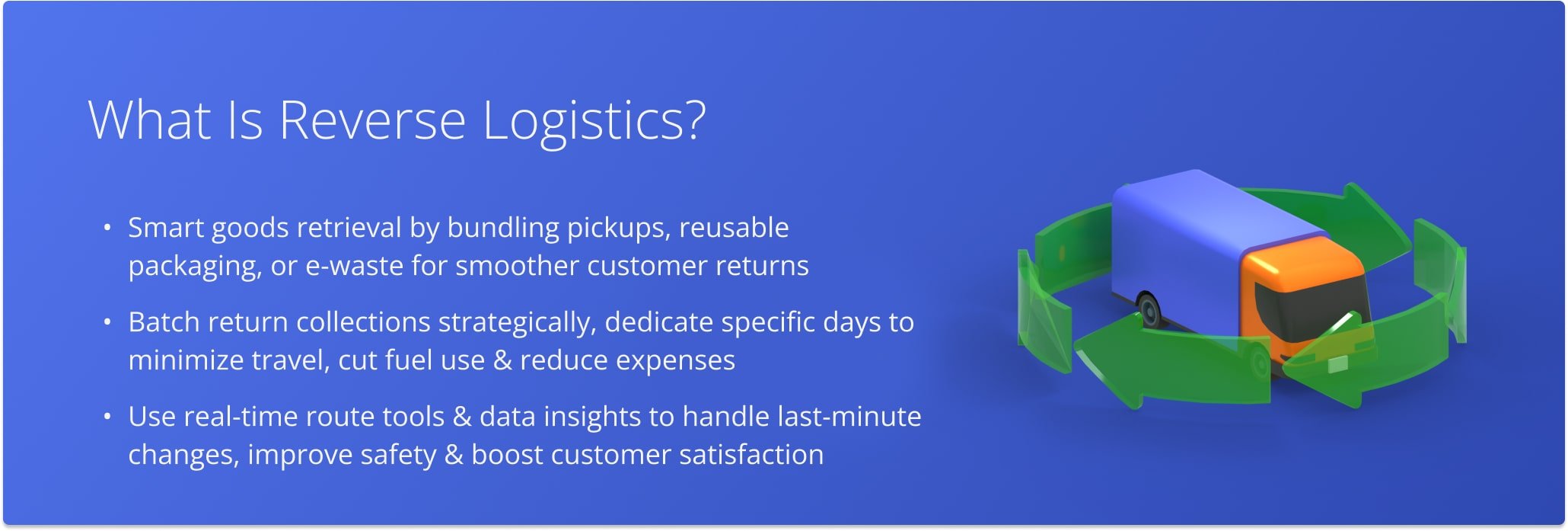What Is Reverse Logistics?
Reverse logistics is the opposite of last-mile delivery: goods and products are collected from the end customer and returned to the seller. Reverse logistics also encompasses picking up reusable packaging for remanufacturing, refurbishing, or adequate waste disposal. Product returns impose a great challenge for logistics managers due to their unpredictability and associated high costs.
Table of Contents
Reverse Logistics Example
Here are a couple of reverse logistics examples:
Imagine you run a small online home appliances store, and a customer orders a refrigerator and a washing machine. After receiving the delivery, the customer decides to return one of the received appliances. You’ll need to assign a driver to revisit the respective customer, pick up the item they want to return, and deliver it back to the warehouse or distribution center.
Let’s say you offer electronic or e-waste disposal services to local businesses, and you need to collect their old electronics whenever they require your services. This is also considered a reverse logistics process.
Reverse Logistics Optimization
Reverse logistics processes, especially product returns, have high operating costs resulting from collecting each return individually instead of scheduling more of them in a return-collection route.
To optimize reverse logistics, you could dedicate certain days to product returns. For example, you can collect products from customers on Mondays and Fridays. This way, you can collect more boxes at once and minimize travel time. You could also map pickups and drop-offs in the same route to save time and money. To optimize reverse logistics, you need a quickest route planning software solution that can:
- Find the shortest and most cost-efficient routes to lower fuel consumption, reduce windshield time, etc.
- Account for last-minute changes, cancellations, new pickups or drop-offs, etc.
- Minimize accidents and liability risks
- Support customizable reporting and analytics capabilities to fuel data-driven decision-making
- Improve customer satisfaction and loyalty by minimizing late arrivals
- Lower unnecessary overtime and improve your drivers’ in-traffic behavior
- Reduce insurance premiums and keep a close eye on the cost of ignoring (COI)
Visit Route4Me's Marketplace to Check out Associated Modules:
- Routing Business Rules
Commercial Vehicle Route Planning
- Routing Business Rules
Pickup-Dropoff Optimization
- Routing Business Rules
Stops Bundling
- Routing Business Rules
Curbside Delivery
Last Updated:
